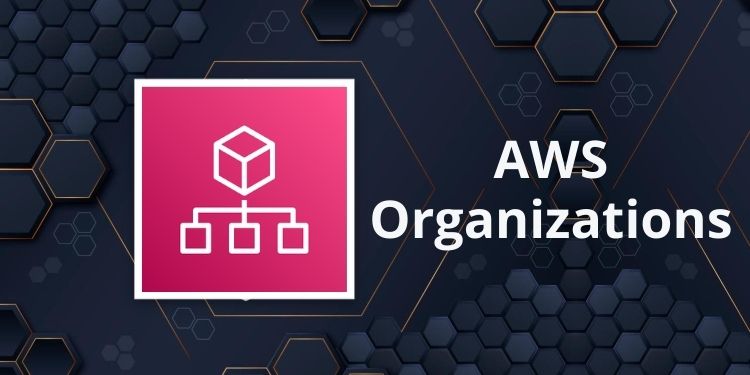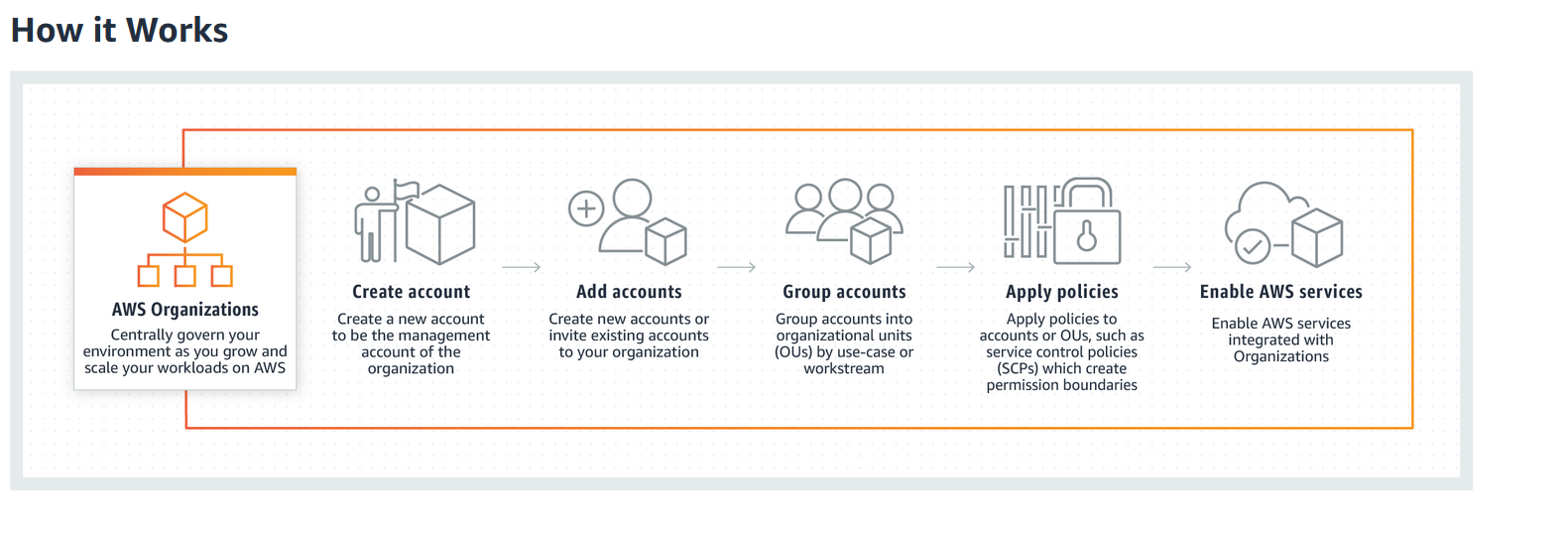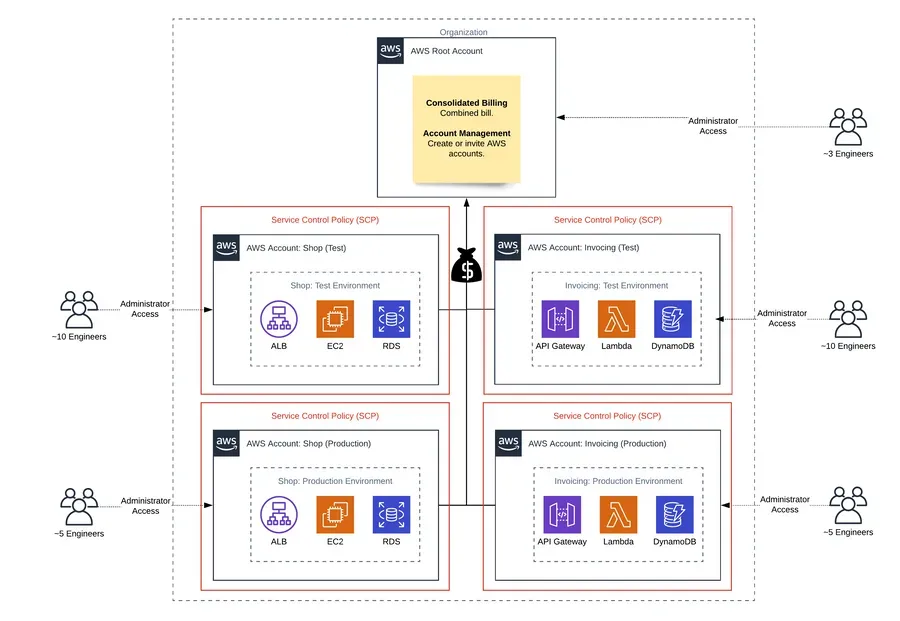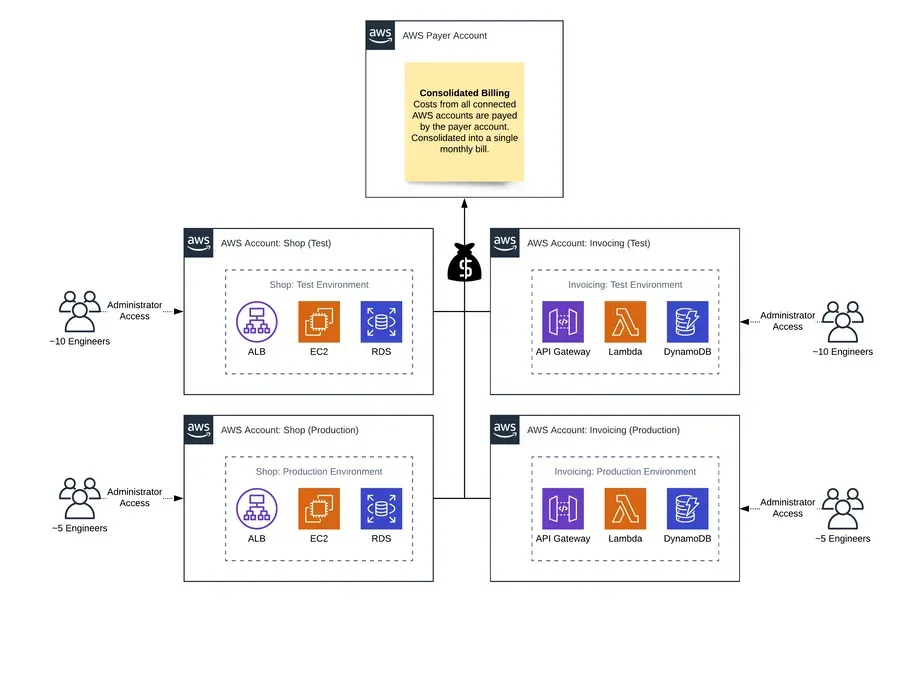AWS Organization Efficient Way to Manage Cloud Infrastructure
AWS Organizations provides an efficient way to manage cloud infrastructure by enabling central governance and simplifying resource management. With hierarchical structure and consolidated billing, organizations can enforce policies, automate deployments, and optimize costs across multiple accounts.

Streamline your cloud management with AWS Organizations for improved control, security, and cost optimization.
As organizations continue to adopt cloud services, managing cloud infrastructure efficiently and securely becomes a critical aspect of their IT strategy. AWS Organizations is a powerful service that enables businesses to manage their AWS accounts and resources more effectively. In this blog, you will get to know how AWS Organizations can help streamline your cloud infrastructure management and make it more efficient.
Management Account: The Organization's Owner
AWS Organizations start with a Management Account, which is the primary account that owns the organization and has administrative control over all the accounts within it. This account is responsible for creating the organization, inviting new accounts to join, and managing the overall structure.
By centralizing control in a Management Account, you can ensure that critical decisions are made by authorized personnel and maintain a clear hierarchy of responsibility within your organization.
Organizations: A Container for AWS Accounts
An AWS Organization is a container for multiple AWS accounts, allowing you to manage and consolidate them under a single umbrella. This makes it easier to manage access, security, and billing across all your accounts.
By organizing your accounts into an AWS Organization, you can simplify account management, ensure consistent policies, and improve visibility into your overall cloud infrastructure.
Organizational Units: Logical Groupings
Organizational Units (OUs) are logical groupings of AWS accounts within an organization, allowing you to apply policies and manage resources more efficiently. You can create OUs based on your organization's structure, such as by department, project, or environment (e.g., development, staging, production).
Using OUs, you can apply consistent policies and settings across a group of accounts, making it easier to enforce best practices and maintain a secure and compliant cloud infrastructure.
Centralized Policy Management with Service Control Policies
Service Control Policies (SCPs) are a powerful feature of AWS Organizations that allow you to define and enforce policies across all accounts within your organization. SCPs provide fine-grained control over the actions and resources that users, groups, and roles can access within each account.
By centralizing policy management with SCPs, you can ensure that your organization's security and compliance requirements are consistently applied across all accounts and resources.

Centralized Consolidation
AWS Organizations provides a centralized console to manage and monitor your accounts and resources, making it easy to gain insights and take action across your entire organization. This consolidation helps you maintain control over your accounts, ensuring they adhere to your organization's security and compliance requirements. Let's explore this feature in more detail:
Consolidated Billing: Bringing Financial Visibility Together
- Consolidated billing allows you to receive a single, comprehensive bill for all the AWS accounts within your organization.
- Instead of dealing with separate invoices for each account, consolidated billing brings financial visibility together in one place.
- This consolidated bill provides an overview of the total usage, costs, and charges across all accounts, making it easier to understand and analyze your organization's cloud expenses.
Cost Allocation Tags: Granular Cost Attribution
- With AWS Organizations, you can apply cost allocation tags to resources across your accounts, which helps in tracking and attributing costs to specific projects, teams, or departments.
- Cost allocation tags allow you to gain granular insights into the cost distribution within your organization.
- By properly tagging resources, you can allocate costs accurately, identify cost-saving opportunities, and optimize resource allocation based on usage patterns.
Budgets and Cost Control: Optimizing Cloud Spending
- AWS Organizations enables you to set up budgets and cost controls for your organization's AWS accounts.
- Budgets help you establish spending limits and receive alerts when costs exceed predefined thresholds.
- By setting up budgets and actively monitoring spending, you can proactively manage and control your organization's cloud costs, preventing unexpected overruns and optimizing resource usage.
Resource Sharing and Optimization: Driving Efficiency
- With AWS Organizations, you can efficiently share and allocate resources across accounts.
- Sharing resources, such as Amazon S3 buckets or Amazon RDS databases, eliminates the need for duplication and helps drive cost savings.
- By optimizing resource usage and reducing redundancies, you can maximize the value and efficiency of your organization's cloud infrastructure.
Service Control Policies
Service Control Policies (SCPs) are a powerful feature of AWS Organizations that allows you to define and enforce permissions across your accounts. SCPs can be applied at the organization, OU, or account level, providing granular control over the services and actions that users and roles can perform. This helps you maintain a consistent security posture across your organization and reduces the risk of unauthorized access or actions.
Consolidated Billing: Billing in a Single Place
One of the most significant benefits of AWS Organizations is consolidated billing, which enables you to view and manage all your accounts' costs in a single place. Consolidated billing simplifies the process of tracking and analyzing your organization's spending, making it easier to identify cost-saving opportunities and manage your budget effectively. The diagram will give you more clarity.


Conclusion
AWS Organizations provides a powerful framework for managing and optimizing your cloud infrastructure efficiently. By leveraging the management account, organizing accounts into logical units, enabling consolidated billing, and enforcing service control policies, you can gain centralized control, simplify administration, enhance security, and optimize costs. Embrace the potential of AWS Organizations and unlock a new level of efficiency in managing your cloud infrastructure.
AWS organizes your workflow. If you are using AWS you might want to gain more insights on Reducing your cost by destructing unwanted AWS resources
Hi! I am Safoor Safdar a Senior SRE. Read More. Don't hesitate to reach out! You can find me on Linkedin, or simply drop me an email at me@safoorsafdar.com
